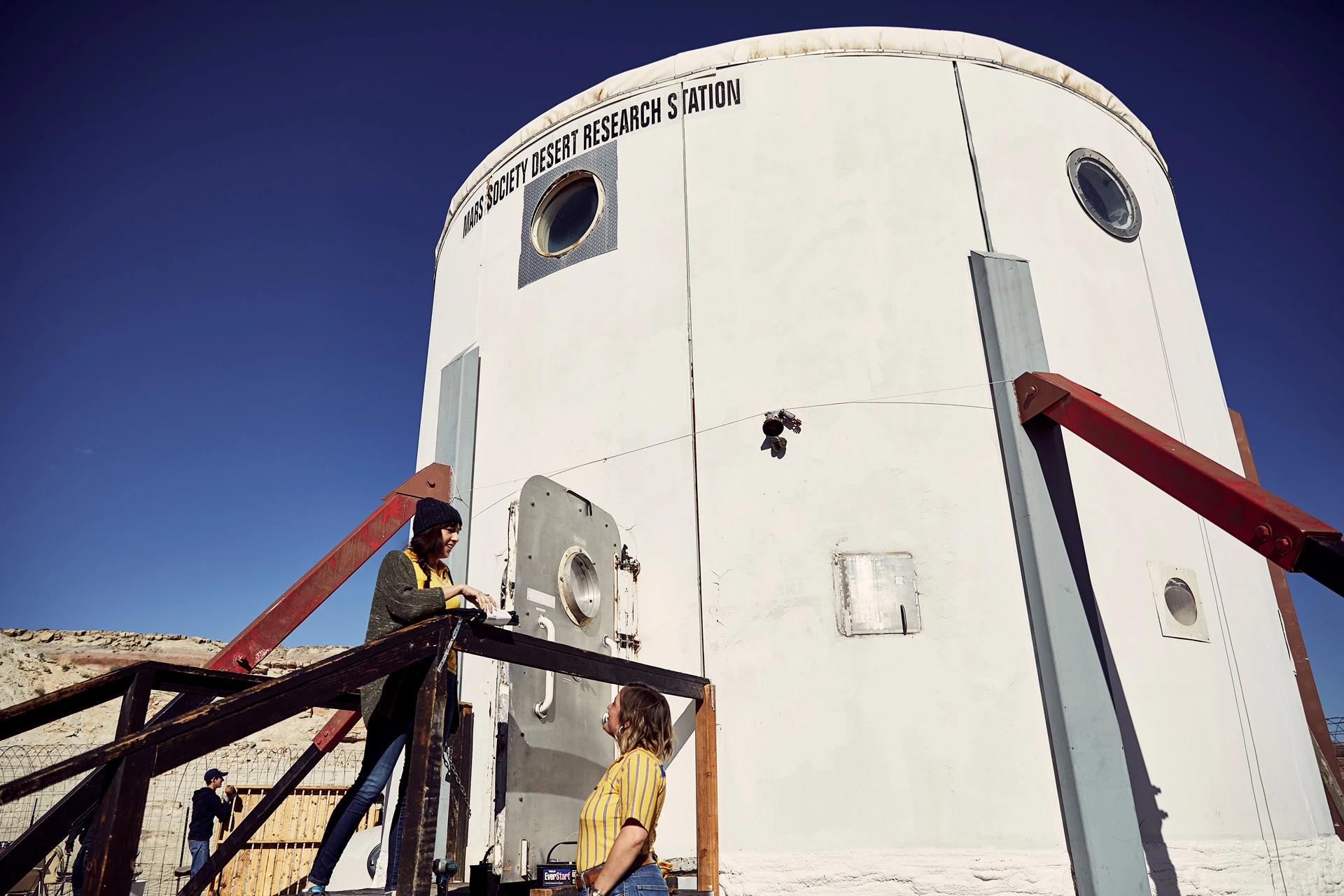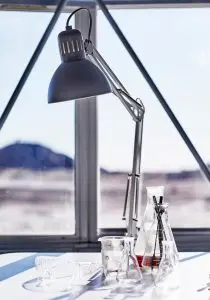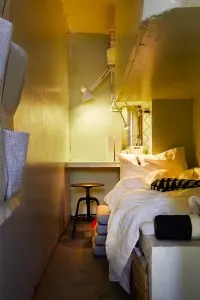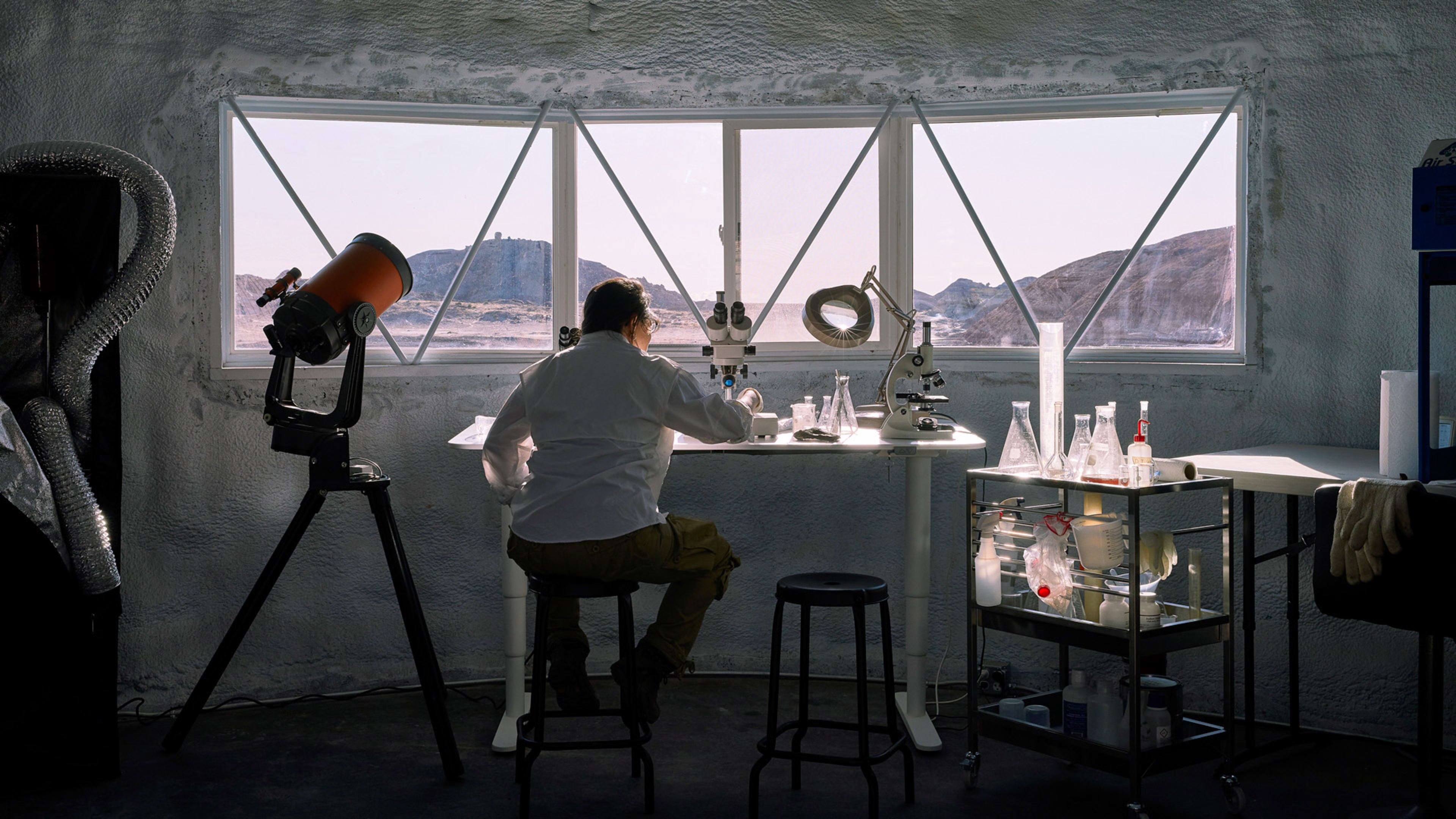In the distant future, when humans spend their lives in shuttles traveling to faraway planets where they live in tiny habitats, it’ll be important for us to decorate these small living spaces so they are comfortable for extended stays. Ikea wants us to know that we’re in good hands. The Swedish furniture giant is already thinking about how to outfit these minuscule living spaces of the future. And, based on initial designs, there’s a good chance that we’ll feel very comfy in these future homes, thanks to clever storage systems, warm lighting, and little greenhouses full of plants.

Two years ago, Ikea sent designers to the Mars Desert Research Station (MDRS), which created a habitat in the Utah desert that mimics the conditions on the Red Planet. Ikea interior designer Christina Levenborn stayed in the habitat, ultimately creating an Ikea line for small spaces inspired by her stay. But more recently, she used her experience living in the habitat to help researchers outfit the space. She just returned from redecorating the habitat, which now looks brightly lit and neatly organized. In fact, it looks a lot like what you’d see in an Ikea catalog—which is impressive, because the space is exceptionally small and stark.

The MDRS was established in the early 2000s to help researchers and students from around the world figure out how humans can survive on other planets—and particularly, on Mars. It is located on the inauspiciously named Cow Dung Road, in Hanksville, Utah, where the climate is hot and dry. The habitat itself—sometimes called the Hab—is a domed cylinder measuring about 8 meters (26 feet) high, that consists of a lower deck housing a shared lab and workshop area, and an upper deck that features a kitchen and six tiny bunk rooms for sleeping and privacy. Groups of six researchers spend weeks, or months, within these tiny living quarters figuring out how to deal with everyday life on another planet. They build greenhouses to grow food, they create labs to study soil samples, and they learn how to breathe using oxygen tanks.
But researchers—and eventually astronauts—must also figure out how to really savor life in this small space. This means participating in all of the aspects of everyday life that allow us to thrive as humans, like getting a good night’s sleep, enjoying hobbies and pastimes, gathering with friends, and feeling cozy in our living spaces. And this is where Ikea can really lend its expertise. Over the last few years, the company has invested heavily in conducting research about what makes a house feel like a home. It does interviews with thousands of people around the world, and presents these findings in an annual Life at Home report. When it comes down to it, the universal qualities that make people feel at home have to do with security, comfort, and belonging.

Levenborn and other Ikea designers have brought some of these insights into their work with the MDRS habitat. Part of what makes a house comfortable simply comes down to feeling a sense of privacy and space, even in small living quarters. And this can be solved with practical furniture that keeps stuff neatly organized and out of view. To this end, Ikea installed BROR shelving units in the workshop areas, which keeps items tucked away, but also happens to be made of power-coated galvanized steel that withstands dirt, moisture, and heavy loads. In the lab, Ikea set up furniture that can be configured in many ways to allow for multi-use space. The kitchen trolley, desk, and stools can be used as an individual workspace or a group gathering area, and inhabitants can either stand or sit as they work.

“We tried to work with products for small-space living situations that could be arranged in a flexible and multifunctional way,” Levenborn explained in a statement. “For the habitat, we brought products on wheels for mobile living, stools for seating, and table surfaces and stackable chairs for saving space.”
The six bedrooms were a particular challenge, because they are extremely tiny spaces and yet, they are the only spots where researchers can be alone and recharge. Ikea designers outfitted the rooms with hanging organizers and hooks, along with USB chargers. And importantly, they included work lamps that cast a warm glow, making the space feel cheery. Ikea also helped outfit the MDRS greenhouse with an array of outdoor products, including a large cabinet, bench, and a solar-powered lamp, along with water cans.
Ikea has always been a go-to brand for people looking to outfit small spaces, including those who live in tiny city apartments and college students living in shoebox dorm rooms. All of the ideas Levenborn generated for the Mars habitat will be useful for everyday consumers trying to decorate tiny homes. But the MDRS project also allows us to project forward into our interplanetary or intergalactic future, and imagine what our lives will be like then. Ikea’s hypothesis is that on some level, our needs will be the same as they are now. Even as we explore far reaches of our solar system, we’ll still want a welcoming spot to come home to at the end of the day, a place to gather with friends and family to eat, and a neatly organized closet to store our stuff.
Recognize your brand’s excellence by applying to this year’s Brands That Matter Awards before the early-rate deadline, May 3.






